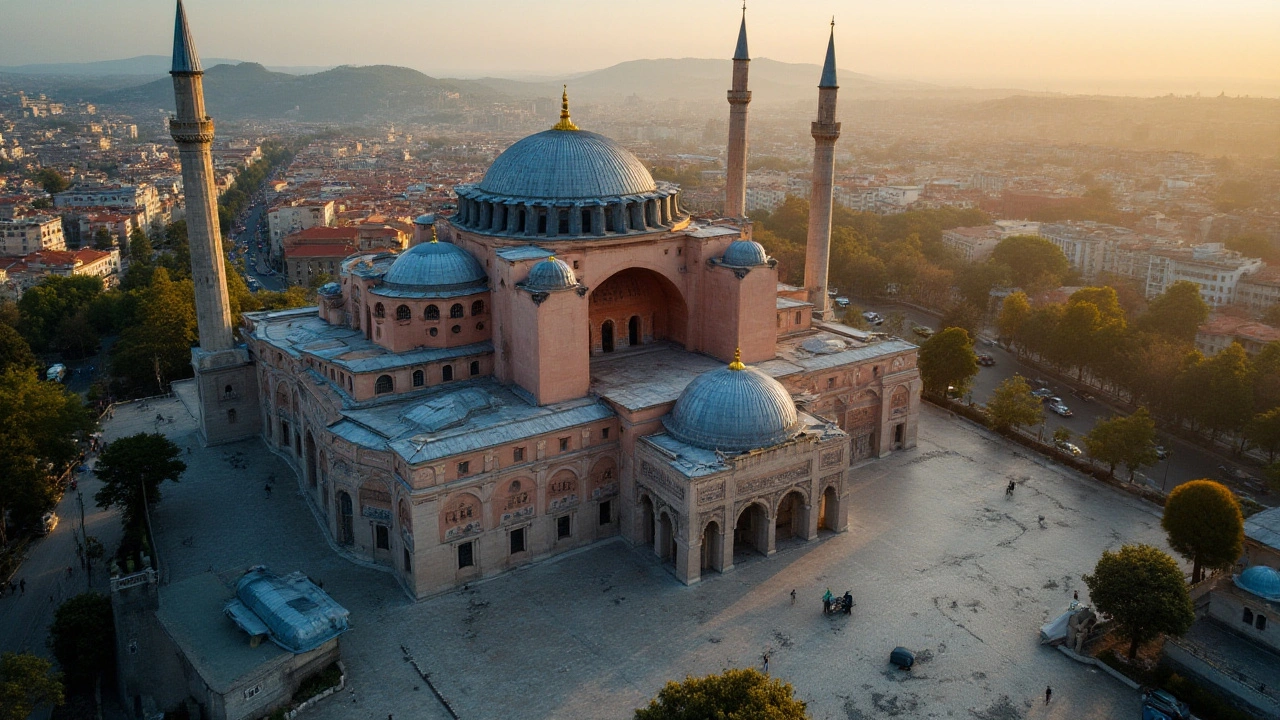Constantinople structures: Hagia Sophia, Walls, Cisterns and More
Constantinople's buildings changed how architects thought about space and light. The Hagia Sophia's dome was a game-changer, and the city's walls, cisterns, and churches show a mix of Roman engineering and Eastern taste.
If you want a quick guide, this page walks you through the major structures, what makes them special, and simple ways to spot Byzantine features when you visit or study images.
Must-see structures and why they matter
Hagia Sophia — Start here. Built under Emperor Justinian, it pushed masonry and dome-building to new limits. Look for the huge central dome, long nave, and later-added mosaics that mix imperial portraiture with religious scenes.
Theodosian Walls — These massive defensive walls kept the city safe for centuries. Notice the double-wall layout, towers at regular intervals, and the strategic gates that controlled access.
Basilica Cistern — An underground water reservoir that still feels eerie and powerful. Walk among the forest of columns and spot the reused Roman capitals and the famous Medusa heads.
Hippodrome and Palace Complex — Once the city's social and political center. The Hippodrome hosted chariot races; the nearby palace fragments hint at the imperial life and ceremonial architecture.
Chora (Kariye) and smaller churches — They show how mosaics and frescoes evolved toward more intimate, detailed religious art. These sites are great for close-up study of Byzantine iconography.
How to recognize Byzantine features
Look for domes on pendentives — that is, round domes set over square rooms using curved triangular supports. It’s one of the clearest signs of Byzantine engineering.
Check the mosaics: lots of gold backgrounds, compressed figures, and theological scenes. Unlike Roman frescoes, Byzantine mosaics aim for light and spiritual presence rather than naturalism.
Materials and construction show Roman roots: alternating brick and stone bands, heavy use of vaults, and reused building elements (spolia) like columns and capitals. That mix tells you builders valued both strength and symbolism.
Plans vary from long basilicas to central-plan churches. If a church feels centralized with a big dome and a short nave, it’s following a Byzantine idea of space focused on the altar and dome light.
Practical tips: visit early to avoid crowds, bring a torch for dim cisterns, and listen to a guide for details you’d miss in pictures. When you look at a building, ask what the dome does to light, where recycled stones appear, and which decorations came later.
Want to read deeper? Check our Byzantine architecture pieces and the Hagia Sophia article for detailed history and images. Constantinople's structures still teach architects and travelers how to blend engineering, art, and power into buildings that last.

Exploring Byzantine Architecture: A Journey Through Ancient Artistry
Dive into the mesmerizing world of Byzantine architecture, a blend of art and engineering that flourished in the Eastern Roman Empire. Learn how this architectural style transformed iconic structures with grand domes and ornate mosaics, influencing generations to come. From the awe-inspiring Hagia Sophia to the hidden gems across Europe and the Middle East, appreciate the rich heritage and craftsmanship of Byzantine architects. Understand its key elements and the historical significance it holds even today.
Read more